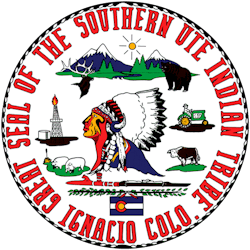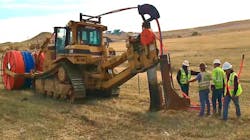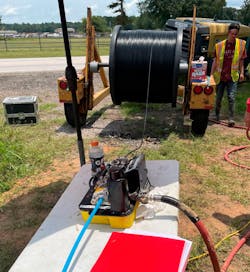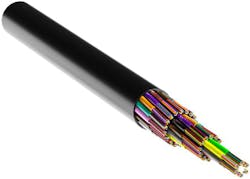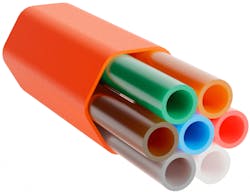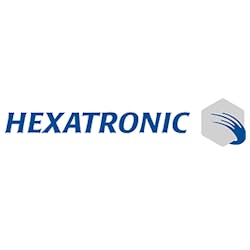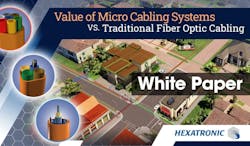Critical Collaboration: A Use Case on Combining Partnerships and Technology to Improve Communities, Part 1
Winning Partnership for Widespread Broadband
Internet access has become recognized as the fourth utility in addition to water, gas, and electricity, because it impacts every part of our lives in our rapidly changing world – from work to school to home. With the introduction and accelerated advancement of technologies, having access to affordable, redundant, and abundant broadband is quickly becoming the critical infrastructure of our time.
However, there is a vast majority of homes and businesses in far-reaching rural areas that do not have any means to connect to the Internet. This is referred to as the "digital divide". The digital divide typically exists between those in cities and those in rural areas, including tribal lands.
At the onset of the COVID-19 pandemic, the Southern Ute Indian Tribe (SUIT) realized that 86% of the Reservation’s 6,800 (tribal and non-tribal) homes and businesses across their 1,058 square miles located in Southwestern Colorado, did not have broadband connectivity due to non-existent infrastructure. As part of the Tribal Broadband Modernization Project, the Tribe researched partners to engineer and construct a multi-phase plan, that will deliver broadband to 95% of homes within 5 years.
Bonfire Engineering and Construction (Denver, CO) was selected as the Tribe’s engineering and construction partner. Bonfire in turn, partnered with Hexatronic U.S. (Lexington, KY), to be their primary supplier of the fiber optic infrastructure needed to build the Tribe’s end-to-end Fiber-to-the-Home (FTTH) solution.
Together as an ecosystem, Bonfire and Hexatronic continue to engage tribal stakeholders to collaborate and communicate step-by-step to make sure that they will design and install the most cost-effective, reliable, and scalable system that will not only remove the digital divide but bring digital equity to current members and future generations.
After presenting the plans to the SUIT stakeholders, the Tribe’s Southern Ute Shared Services (SUSS) and Bonfire recommended a system based on blown fiber technology from Hexatronic. This installation will take place in multiple phases through 2026, and will include securing national grants available for infrastructure upgrades.
This article is subtitled, "Part 1: Designing a Blown Fiber System for Widespread Broadband in Rural Colorado," as it focuses on the highly collaborative effort between tribal entries, Bonfire and Hexatronic, in the planning and designing of the multi-phase broadband project.
This cooperative collaboration among all parties involved was key to assuring there would be no adverse impact to cultural and archaeological resources, while adhering to all the requirements from Federal, State, Country, and Local agencies.
The article explains why a blown fiber system (vs. a traditional fiber optic system) from Hexatronic was selected, including:
- Cost and labor savings
- Simplified installation and maintenance
- Providing a migration path for future applications and connections
The follow-up article (Part 2) will focus on the actual installation phases – from placing the above-ground communication towers to the intricate process boring of the land for the underground microduct system and installing fiber out to the businesses and homes.
Download “Part 1: Designing a Blown Fiber System for Widespread Broadband in Rural Colorado” here:
This article was a cooperative effort from interviews with:
- Melvin J. Baker, Chairman, Southern Ute Indian Tribe
- Jeff Engman, Chief Information Officer, Southern Ute Shared Services
- Brian Hollister, co-founder and CEO of Bonfire Engineering and Construction
- David Cleary, PhD, and CTO of Bonfire Engineering and Construction
- Beni Blell, VP of Sales for Hexatronic U.S.
- Mark Turner, Hexatronic Business Development Manager
This article was written by:
- Carol Everett Oliver, RCDD, DCDC, an industry author and market specialist for Hexatronic U.S., and principal of CEO Communications, an ICT marketing firm
Hexatronic (www.hexatronic.com) is the supplier for all passive fiber optic infrastructure components, which employs a complete air blown fiber system versus traditional fiber optic cabling. Using micro cabling systems for access networks better utilizes appropriated funding by reducing CapEx and OpEx, and at the same time significantly reducing the impact on the environment.
Blown fiber micro cabling technology is quickly becoming the preferred system solution for access networks based on bandwidth requirements, speed of deployment, network flexibility, future scalability, and of course, the lowest total cost of ownership. When compared to traditional fiber cabling, micro cabling systems provide a much higher return on investment (ROI) due to reduction in material costs, as well as the overall lower cost in labor capitalized by drastic reduction in installation time.
More on Broadband Installation from Hexatronic:
White Paper: Value of Micro Cabling System vs. Traditional Fiber Optic Cabling Systems for Access Networks
Blown fiber cabling techniques were specifically developed to provide the lowest Total Cost of Ownership (TCO) and the highest level of network futureproofing. Read about cost, deployment speed and system flexibility.
Video: Hexatronic and Centric Fiber: Subscriber Connection Underway
Actual on-site installation of the micro ducts and fiber system which includes the blowing speed of 100 mpm from individual homes to the fiber distribution housing and the termination of 96 fibers per FDH cabinet.
Video: Strategic FTTH Partners: Hexatronic and Centric Fiber
Partnering to supply complete end-to-end passive fiber optic systems for Centrics’ fiber-to-the-home (FTTH) build throughout the state of Texas. Includes interviews with the key players, Per-Anders Eriksson, CEO, Hexatronic US, and Jason Palmenberg, President/COO, Centric Fiber.

